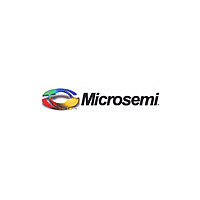A54SX32-2BG329IX3 MICROSEMI, A54SX32-2BG329IX3 Datasheet - Page 23

A54SX32-2BG329IX3
Manufacturer Part Number
A54SX32-2BG329IX3
Description
Manufacturer
MICROSEMI
Datasheet
1.A54SX32-2BG329IX3.pdf
(64 pages)
Specifications of A54SX32-2BG329IX3
Lead Free Status / Rohs Status
Not Compliant
Figure 1-11
from 1 MHz to 200 MHz.
Figure 1-11 • Power Dissipation
Junction Temperature (T
The temperature that you select in Designer Series
software is the junction temperature, not ambient
temperature. This is an important distinction because the
heat generated from dynamic power consumption is
usually hotter than the ambient temperature. Use the
equation below to calculate junction temperature.
Where:
T
ΔT = Temperature gradient between junction (silicon)
ΔT =
a
Junction Temperature = ΔT + T
= Ambient Temperature
θ
ja
and ambient
× P
Maximum Power Allowed
shows the characterized power dissipation numbers for the shift register design using frequencies ranging
1200
1000
800
600
400
200
0
0
a
=
20
J
)
Max. junction temp. (°C) – Max. ambient temp. (°C)
------------------------------------------------------------------------------------------------------------------------------------
40
60
EQ 1-13
80
θ
ja
Frequency MHz
(°C/W)
v3.2
100
P
θ
Package Thermal Characteristics
The device junction to case thermal characteristic is θ
and the junction to ambient air characteristic is θ
thermal characteristics for θ
different air flow rates.
The maximum junction temperature is 150 °C.
A sample calculation of the absolute maximum power
dissipation allowed for a TQFP 176-pin package at
commercial temperature and still air is as follows:
ja
120
= Power
= Junction to ambient of package.
Consumption section
located in the
section.
140
160
calculated
=
180
"Package Thermal Characteristics"
150°C – 70°C
-----------------------------------
28°C/W
200
from
ja
are shown with two
=
Estimating
2.86 W
SX Family FPGAs
θ
ja
numbers are
EQ 1-14
ja
Power
. The
1-19
jc
,













